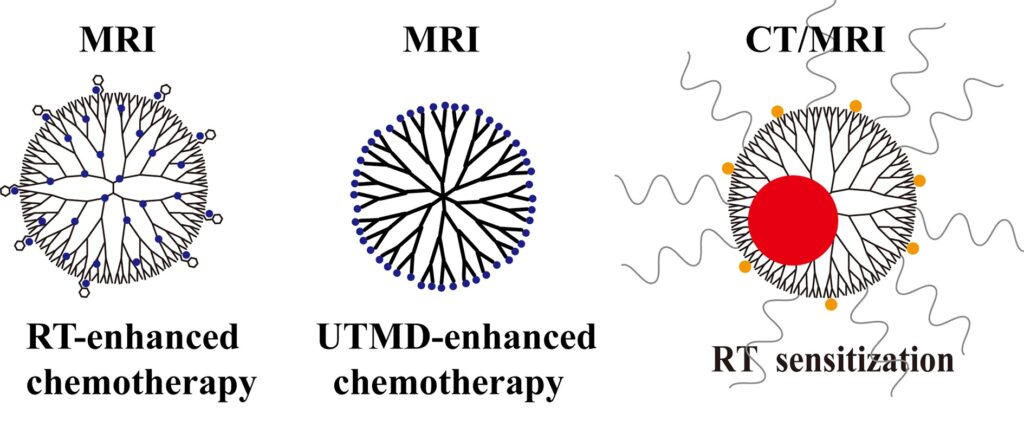Presentation Title: Inteligent dendrimer-metal nanohybrids for imaging-guided enhanced tumor therapy
Prof. Xiangyang Shi presented this talk in the webinar on Nanomedicine, Nanomaterials and Nanotechnology organized by Vebleo
Author: Yu Fan, Xiangyang Shi*
Affiliation: State Key Laboratory for Modification of Chemical Fibers and Polymer Materials, College of Chemistry, Chemical Engineering and Biotechnology (Donghua University), Shanghai, 201620, P. R. China
Biography
Xiangyang Shi is currently a professor and serves as the Vice Dean of the College of Chemistry, Chemical Engineering and Biotechnology, Donghua University. Prof. Xiangyang Shi graduated with B.Sc. (chemistry, Henan Normal University, Xinxiang), M.E. (applied chemistry, Beijing Institute of Technology, Beijing), and Ph.D. (organic chemistry, Institute of Photographic Chemistry, the Chinese Academy of Sciences, Beijing) in 1992, 1995 and 1998, respectively.
Prof. Xiangyang Shi worked as a Postdoctoral Fellow in Tsinghua University (1998-2000, Beijing) and Max-Planck Institute of Colloids and Interfaces (2000-2001, Potsdam, Germany). He then moved to California State University, Los Angeles (2001-2002) as a visiting scholar.
From 2002-2008, he worked as a Research Fellow, Research Associate II, Research Investigator, and Research Assistant Professor at the University of Michigan, Ann Arbor. He then became a professor of special appointment both in Donghua University and in Shanghai Institutions of High Learning (Eastern Scholar) since 2008. Since 2010 he has also been appointed as an “Invited Chair in Nanotechnology” at University of Madeira, Portugal.
Prof. Xiangyang Shi has authored or coauthored 387 SCI-indexed peer-reviewed journal articles and 305 technical conference abstracts or proceeding papers, along with 16 invited book chapters and 76 approved patents. His current research interests are focused on the development of organic/inorganic hybrid nanoplatforms and microfluidic platforms for sensing, imaging, and theranostic applications, in particular for precision cancer imaging and therapy.
He is currently serving as an associate editor for Wiley journal WIREs Nanomedicine and Nanobiotechnology, and an editorial board member for Bioconjugate Chemistry, Nanomedicine, and Current Nanoscience.
Abstract
Cancer is a leading cause of death worldwide, and theranostics have emerged in recent years to provide an efficient, personalized, and safe alternative in cancer management. It is urgent to search for novel nanotheranostics to efficiently integrate cancer diagnosis and treatment elements via unique nanotechnology approaches. Moreover, the efficient delivery of therapeutic and imaging agent into tumors is a major challenge for cancer theranostics.
Dendrimers represent one of the intelligent nanoplatforms for cancer treatment both as nanocarriers and as drug active per se. Herein, we used both poly(amidoamine) (PAMAM) dendrimers and phosphorous dendrimers as the starting scaffold to design functional metal/dendrimer hybrid nanoplatforms for tumor theranostics with enhanced tumor delivery or tumor therapy effect. We first explored the dendrimer-based copper complexes for the T1-weighted MR imaging/chemotherapy of tumors and tumor metastasis.
The PAMAM dendrimer-based copper complexes (G5.NHAc-Pyr/Cu(II)) were able to inhibit the proliferation of different cancer cell lines with half-maximal inhibitory concentrations (IC50) ranging from 4 to 10 μM and induce significant cancer cell apoptosis. Due to the presence of Cu(II), the G5.NHAc-Pyr/Cu(II) complexes displayed an r1 relaxivity of 0.7024 mM−1s−1, enabling effective in vivo MR imaging of tumor xenografts and metastatic nodules.
To improve the theranostic performance, the metallo-phosphorus dendrimer 1G3-Cu was also employed as a drug-free theranostic nanoplatform. The 1G3-Cu complexes possessed an r1 relaxivity of 0.7432 mM−1s−1 for T1-weighted MR imaging and an IC50 of 1.24 μM to inhibit the growth of a pancreatic cancer cell line. In particular, we used low dose radiotherapy (RT) or ultrasound technology to increase the tumor accumulation of copper complexes to improve their diagnosis and treatment efficacy.
We also designed dendrimer-based contrast agent containing high-Z elements to act as radiosensitizers to promote the treatment efficacy of RT. We employed the hypoxia-targeted dendrimer-based Au/Gd nanohybrids linked with nitroimidazole (Nit) for dual-mode CT/MR imaging-guided sensitized RT.
The designed PAMAM dendrimer-based nanohybrids having 3.2-nm Au cores exhibit an excellent X-ray attenuation effect, acceptable r1 relaxivity (1.32 mM-1s-1), and enhanced cellular uptake in hypoxic cancer cells, affording efficient dual-mode CT/MR imaging of tumor hypoxia. Under X-ray irradiation, the Gd-Au DENPs-Nit nanohybrids could produce reactive oxygen species, promote DNA damage and prevent DNA repair, facilitating sensitized RT of hypoxic cancer cells in vitro and tumor hypoxia in vivo.
The developed hypoxia-targeted dendrimer-based nanohybrids may be employed as both contrast agents and nanosensitizers for precision tumor hypoxia imaging and sensitized tumor RT. Overall, intelligent dendrimer/metal nanohybrids with the simplest composition can be designed for imaging-guided enhanced tumor therapy by combination of RT or ultrasound, thus providing many opportunities for further development for translational medicine applications.
Graphical Abstract

This talk was delivered in the webinar organized by Vebleo